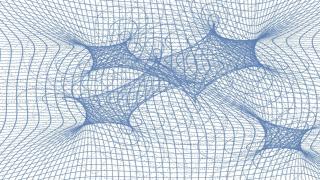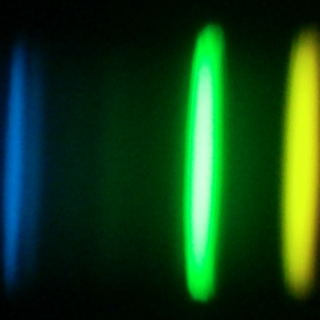Bibcode
Forés-Toribio, R.; Mediavilla, E.; Muñoz, J. A.; Jiménez-Vicente, J.; Fian, C.; del Burgo, C.
Bibliographical reference
The Astrophysical Journal
Advertised on:
7
2024
Journal
Citations
0
Refereed citations
0
Description
We propose and discuss a new experimental approach to measure the centroid shift induced by gravitational microlensing in the images of lensed quasars (astrometric microlensing). Our strategy is based on taking the photocenter of a region in the quasar large enough as to be insensitive to microlensing as reference to measure the centroid displacement of the continuum. In this way, single-epoch measurements of astrometric microlensing can be performed. Using numerical simulations, we show that, indeed, the centroid shift monotonically decreases as the size of the emitting region increases, and only for relatively large regions, like the broad line region (BLR), does the centroid shift become negligible. This opens interesting possibilities to study the stratification of the different emitters in the accretion disk and the BLR. We estimate the amplitude of the centroid shifts for 79 gravitationally lensed images and study more thoroughly the special cases Q2237+030 A, RXJ1131-1231 A, PG1115+080 A2, and SDSS J1004+4112 A. We propose to use spectro-astrometry to simultaneously obtain the photocenters of the continuum and of different emission line regions since, with the precision of forthcoming instruments, astrometric microlensing by ∼1 M ⊙ mass microlenses may be detected in many quasar lensed images. When we consider more massive micro/millilenses, M ≳ 10 M ⊙, often proposed as the constituents of dark matter, the BLR becomes sensitive to microlensing and can no longer be used as a positional reference to measure centroid shifts. Differential microlensing between the images of a lensed quasar along several epochs should be used instead.
Related projects

Relativistic and Theoretical Astrophysics
Introduction Gravitational lenses are a powerful tool for Astrophysics and Cosmology. The goals of this project are: i) to obtain a robust determination of the Hubble constant from the time delay measured between the images of a lensed quasar; ii) to study the individual and statistical properties of dark matter condensations in lens galaxies from
Evencio
Mediavilla Gradolph

Chemical Abundances in Stars
Stellar spectroscopy allows us to determine the properties and chemical compositions of stars. From this information for stars of different ages in the Milky Way, it is possible to reconstruct the chemical evolution of the Galaxy, as well as the origin of the elements heavier than boron, created mainly in stellar interiors. It is also possible to
Carlos
Allende Prieto